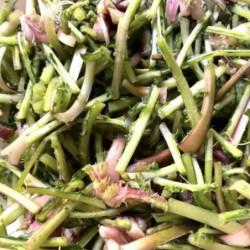- Out-of-Stock


Discover the authentic essence of tagarnina, a wild plant full of flavor and tradition.
Tagarnina is a wild plant full of flavor and tradition. When you buy tagarnina, you'll take home a unique and versatile ingredient that will enhance your dishes with its characteristic bitter flavor and delicate texture. This plant is widely used in Mediterranean cuisine, especially in typical regional dishes.
 Security policy
Security policy
Website built using newest versions, SSL protocols, Secure payments
 Delivery policy
Delivery policy
Receive your order in 24-48h
 Return policy
Return policy
100% Satisfaction guarantee

Guarantee safe & secure checkout
Tagarnina, also known as cardoon or wild thistle, is a perennial herbaceous plant belonging to the aster family.
Tagarnina is native to Europe, North Africa, and Asia Minor, and is commonly found in Mediterranean regions and mountain areas. This plant can grow up to 1.5 meters tall and has an upright, branched stem with thorny leaves. Tagarnina flowers are small and purple, clustered in heads at the top of the stem.
Tagarnina is a highly nutritious plant, rich in vitamins (C, A, B1, B2, B6), minerals (calcium, iron, phosphorus, potassium), and fiber. It also contains antioxidant and anti-inflammatory compounds. There are several varieties of tagarnina, but the most common are wild tagarnina and cultivated tagarnina. Wild tagarnina typically grows in wastelands and mountainous areas, while cultivated tagarnina is grown in orchards and gardens.
In the kitchen, tagarnina is very versatile and used in a variety of dishes. Its young leaves can be cooked like chard, while older leaves are used in stews and salads. Tagarnina is also used to make omelets, scrambled eggs, and empanadas. Regarding its therapeutic properties, tagarnina has been traditionally used to treat digestive and liver problems, as well as to relieve muscle and joint pain. It has also been shown to have antioxidant and anti-inflammatory properties.
As for curiosities, tagarnina has been used since ancient times both as food and for medicinal purposes. It has also been used for weaving baskets and making paper. The quintessential dish that uses tagarnina is the Andalusian stew, a dish made with chickpeas, meat, vegetables, and, of course, tagarnina. Currently, tagarnina is primarily cultivated in Spain, Morocco, Portugal, and France.